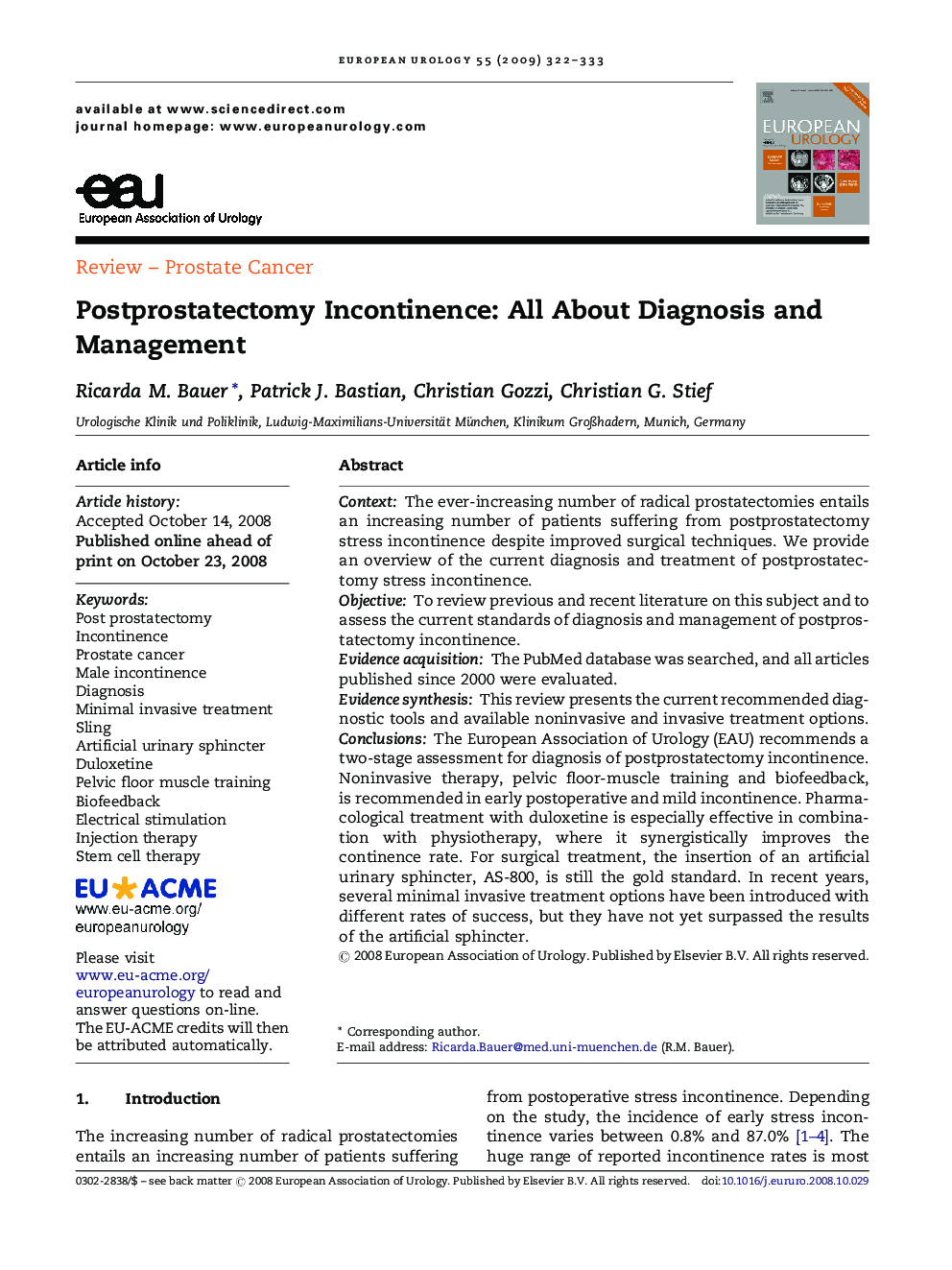| Article ID | Journal | Published Year | Pages | File Type |
|---|---|---|---|---|
| 3925086 | European Urology | 2009 | 12 Pages |
ContextThe ever-increasing number of radical prostatectomies entails an increasing number of patients suffering from postprostatectomy stress incontinence despite improved surgical techniques. We provide an overview of the current diagnosis and treatment of postprostatectomy stress incontinence.ObjectiveTo review previous and recent literature on this subject and to assess the current standards of diagnosis and management of postprostatectomy incontinence.Evidence acquisitionThe PubMed database was searched, and all articles published since 2000 were evaluated.Evidence synthesisThis review presents the current recommended diagnostic tools and available noninvasive and invasive treatment options.ConclusionsThe European Association of Urology (EAU) recommends a two-stage assessment for diagnosis of postprostatectomy incontinence. Noninvasive therapy, pelvic floor-muscle training and biofeedback, is recommended in early postoperative and mild incontinence. Pharmacological treatment with duloxetine is especially effective in combination with physiotherapy, where it synergistically improves the continence rate. For surgical treatment, the insertion of an artificial urinary sphincter, AS-800, is still the gold standard. In recent years, several minimal invasive treatment options have been introduced with different rates of success, but they have not yet surpassed the results of the artificial sphincter.
